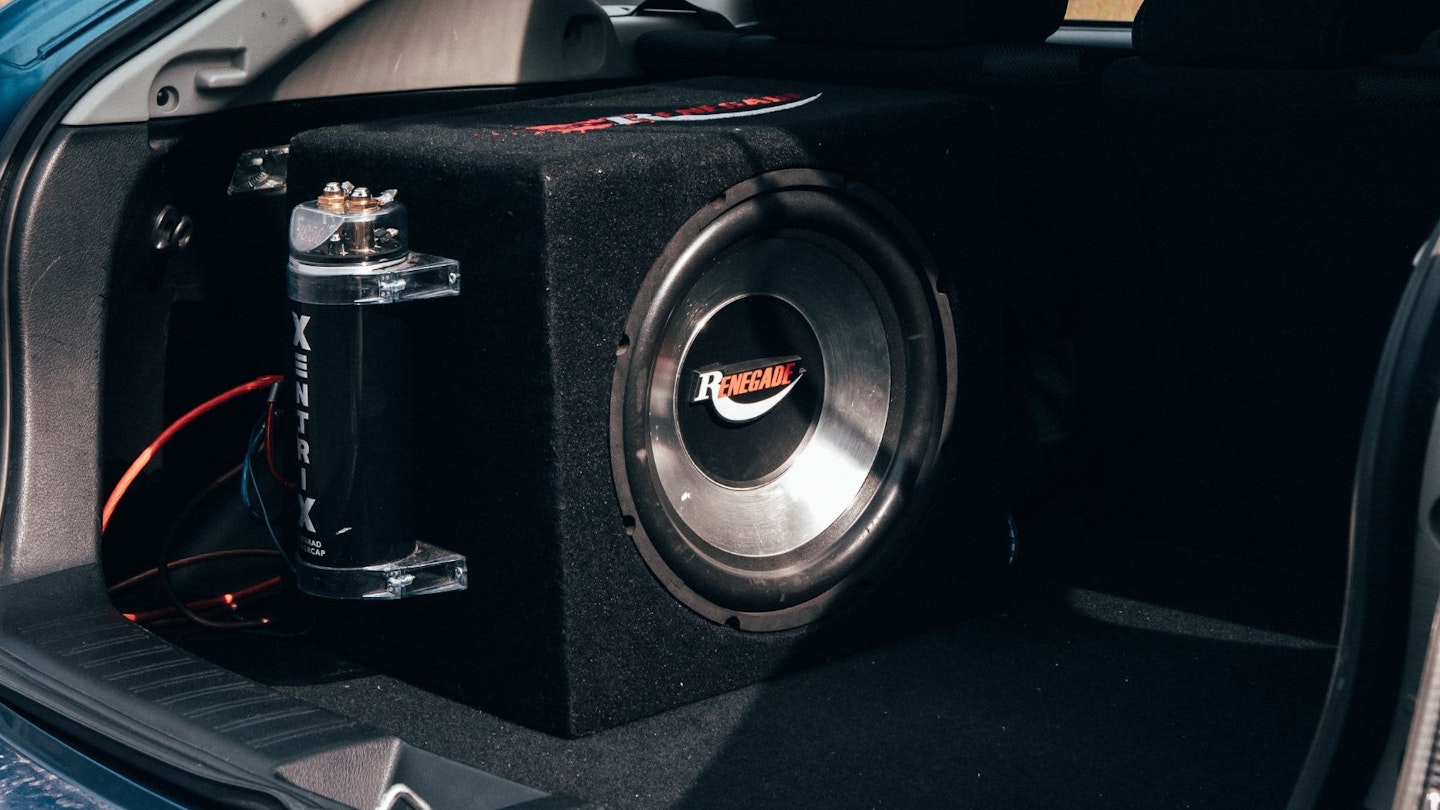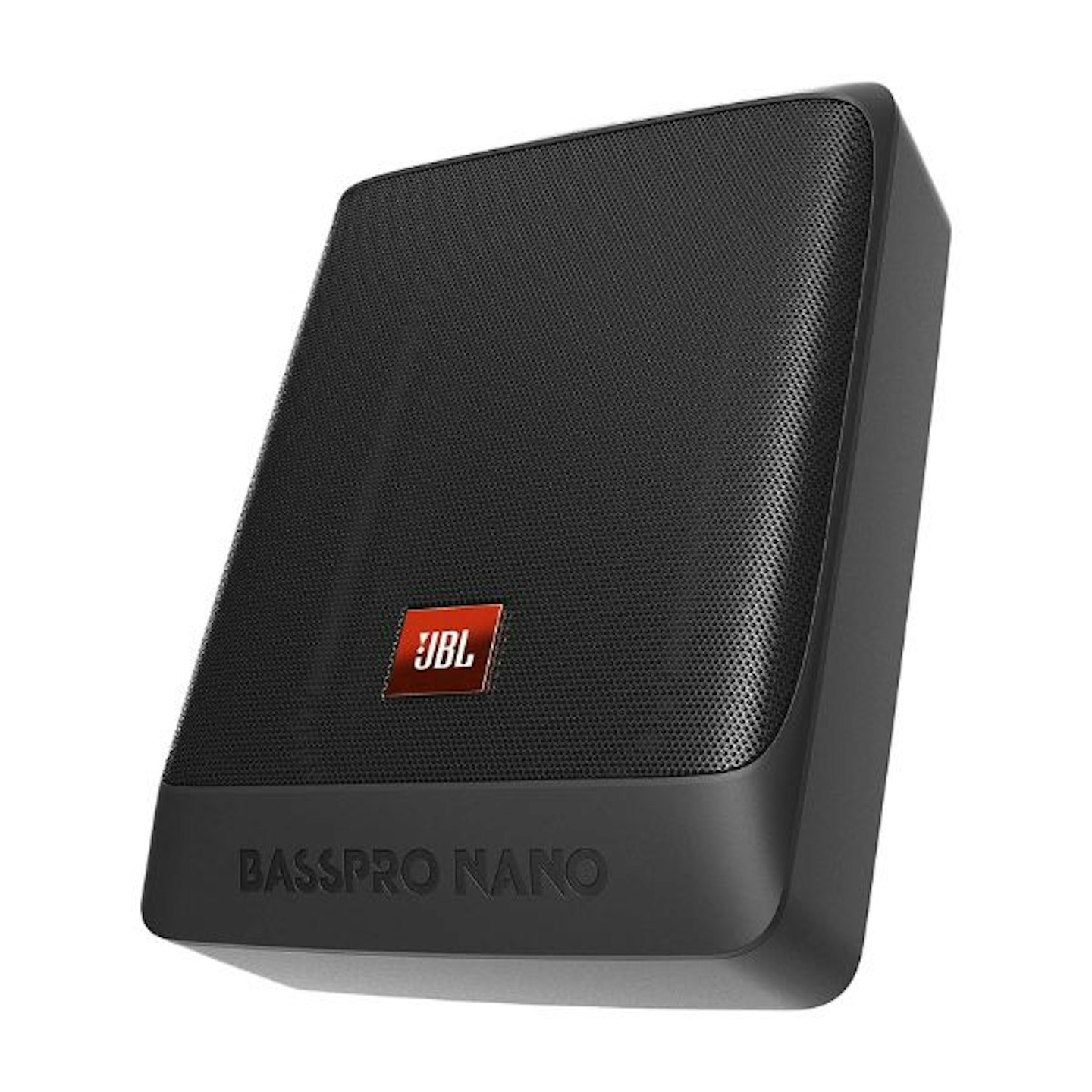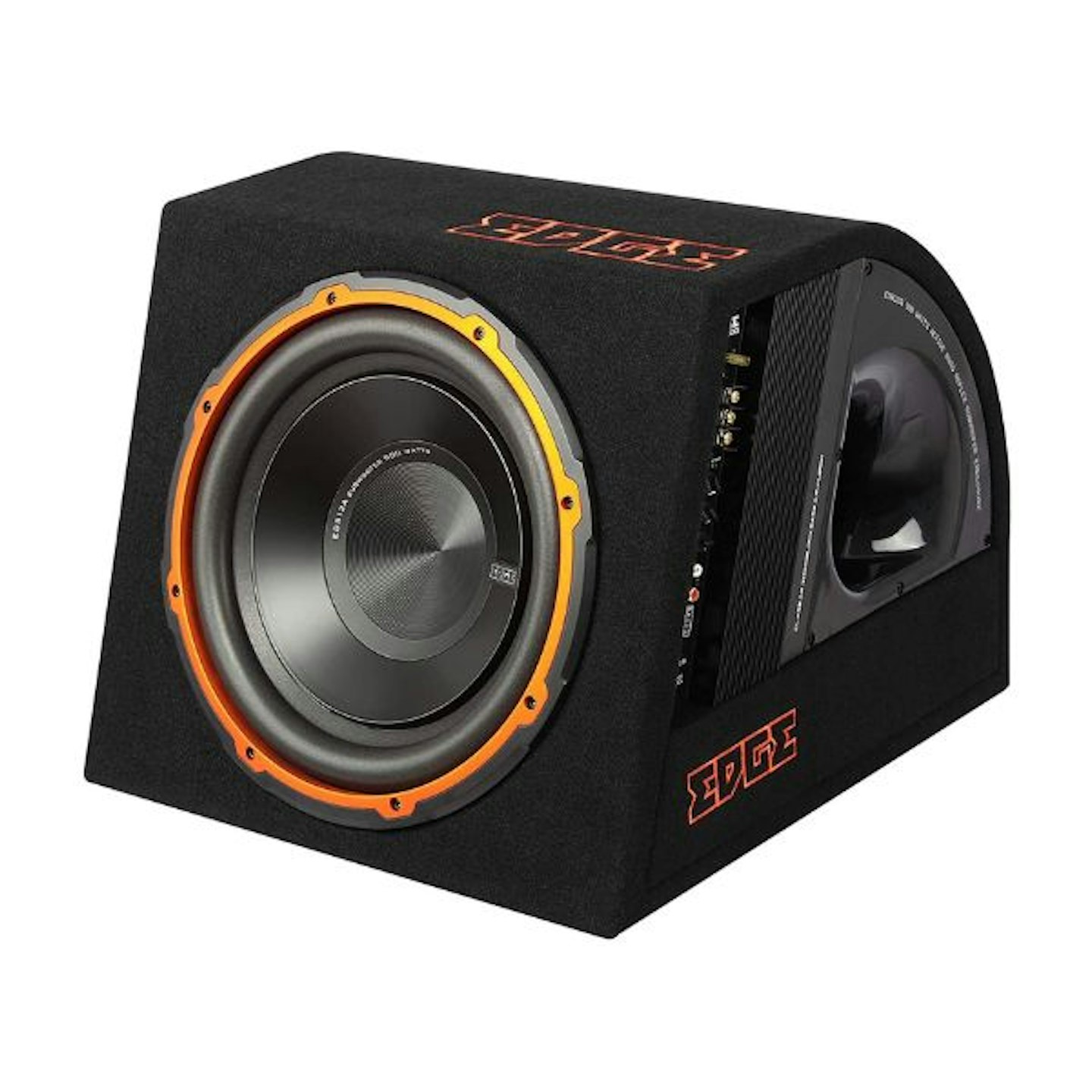There's a line in a 1990 hip-hop song that goes: ‘Now that the party is jumpin'. With the bass kicked in...the Vegas are pumpin', and just like the Miami miscreant who wrote it, we too can appreciate a great bass response. Drug-running, jet skis and early white rapper identity confusion may not be our bread and butter at CAR, but cranking a sound system up from loud to health risk to ‘pumpin’ is a gesture most of us are very familiar with, especially while on the road.
We must also commend Mr Ice on his regard for Cerwin Vega: an LA-based audio equipment manufacturer with almost 70 years of experience producing quality car subwoofers and other audio components. Although Vegas can be difficult to find in the UK, there are still plenty of other great subwoofer options to be explored on the domestic market. Don’t have a subwoofer in your car? Perhaps it’s time that changed.
Fancy upgrading the rest of your in-car tech? Check out our other articles on the best dash cams, best phone holders and CAR's guide to Alexa for your car.
What is a subwoofer?
Subwoofers are loudspeakers that supply the ultra-low-end frequencies of a sound system’s output. While most car stereos feature woofers to fill out the low end, they usually cover a relatively wide frequency range from 20Hz to 2500Hz. Subwoofers, on the other hand, are frequency focussed with narrower output ranges, producing frequencies from 20Hz up to 200Hz. They’re both specialised speakers, just a subwoofer has a little more to give at the very bottom with a more limited role.
Why are subwoofers used in cars?
Subwoofers are great for improving the clarity of sound systems, especially those found in cars. By serving as a free, auxiliary speaker, subwoofers share the overall frequency load of a sound system, freeing up smaller speakers to produce more comfortable frequencies relative to their size. By distributing the load, subwoofers can lower distortion, improve bassline volume, and enhance the overall listening experience. If you love your car music as much as we do, you should invest in a sub.
Not sure which is right for you? Check out our picks of the best subwoofers below:
Editor's choice
This contemporary subwoofer from JBL is compact. Many subwoofers of yesteryear were clumsy and cumbersome units, but this example typifies the modern car subwoofer brief – compact and easy to install with all the power of a serious noise box. The JBL BassPro Nano has been designed to slip effortlessly into any car boot or beneath any car seat. Thanks to its 100Watt RMS Subwoofer Amplifier, though, drivers are guaranteed a crisp and punchy bass sound from anywhere in the vehicle.
The BassPro Nano also uses high-pass filters and other EQ technology to push the output to its limits and keep it there without so much as a crackle. Throw, kick or launch this box down the footwell under heavy braking – with its all-die-cast aluminium enclosure, the BassPro Nano hasn’t just been designed to eliminate rattles, it’s built to last too.
Pros
- Compact design frees up boot space
- Easy to install
Cons
- Not as powerful as the big boys
| Weight | 4.38 kg |
| Dimensions | 26 x 19.5 x 7.5 cm |
| Power output | 100W RMS |
| Active | Yes |
| Speaker diameter | 8 inches |
| Frequency response | 30Hz – 150Hz |
Superb buy
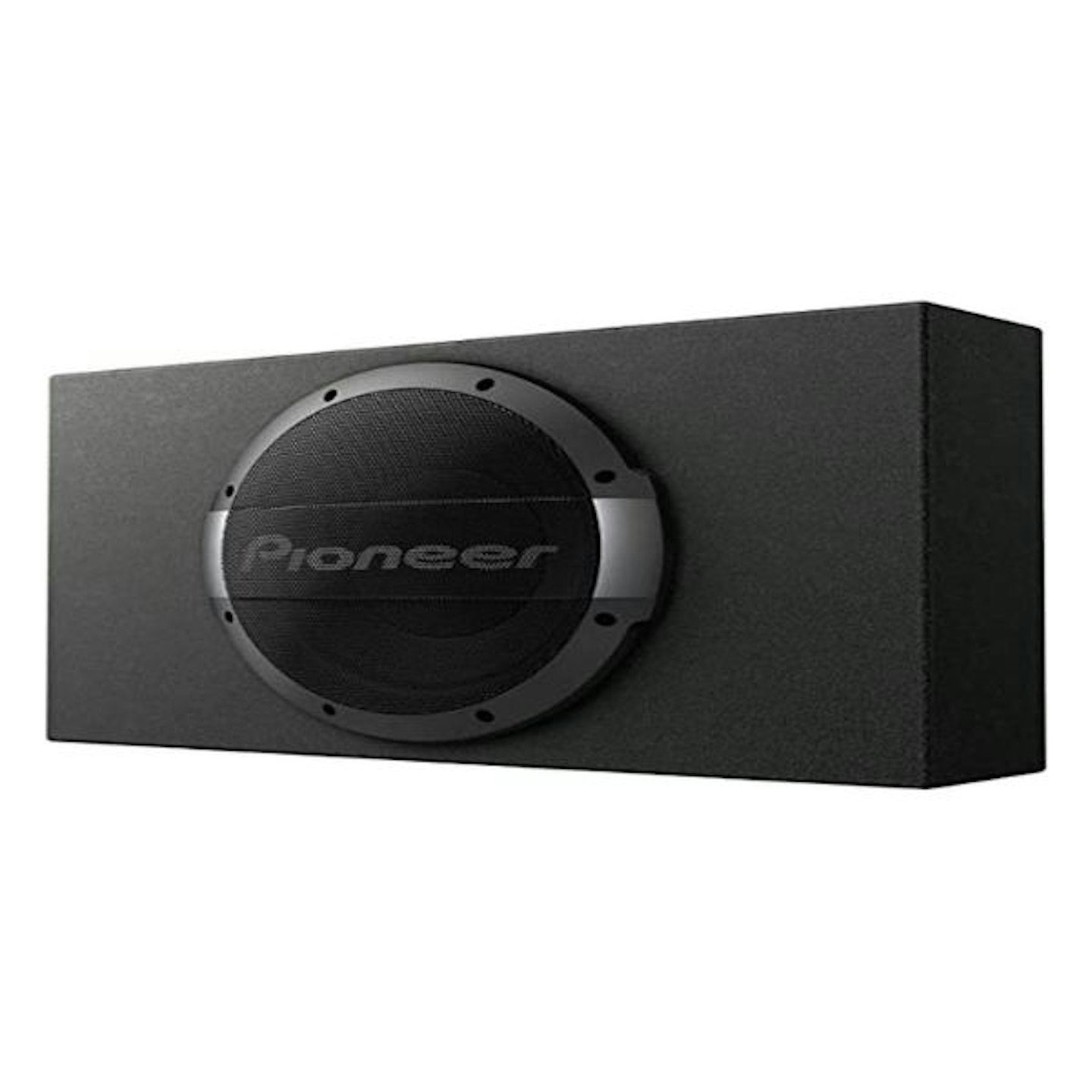
This subwoofer from Pioneer is a bit bigger than the BassPro Nano but with the extra size, drivers can enjoy more power, more volume and more bass. The 10” speaker is capable of fantastic bass reproduction, with potential frequencies as low as sub 35Hz in the right conditions.
To ensure the sub continues to flex while delivering consistently high-standard bass, this Pioneer unit also includes a double ferrite magnet. For strength and durability under heavy load, its cone is made of Injection-Molded Polypropylene, making it stronger than most traditional paper cones.
Pros
- Strong and durable
- Easy to set up
Cons
- Expensive
- Wide frequency range
| Weight | 7.8 kg |
| Dimensions | 55.9 x 34.3 x 20.3cm |
| Power output | 300W RMS power output and 1200W Peak Power |
| Active | Yes |
| Speaker diameter | 10 inches |
| Frequency response | 20Hz - 3.4kHz |
Most compact
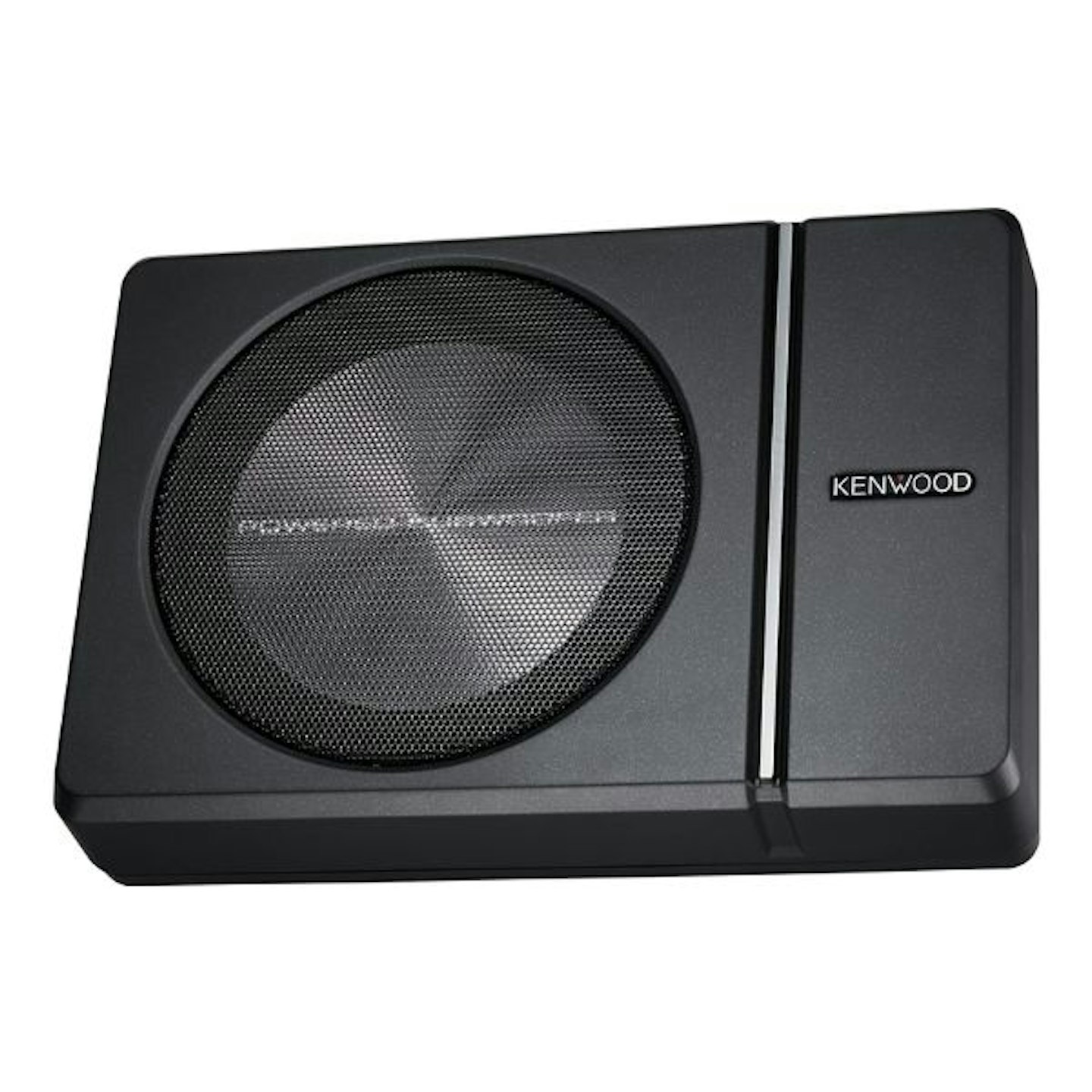
There’s compact and then there’s Kenwood KSC-PSW8 compact. Assembled and housed in an aluminium injection moulded frame, this model is capable of exceptional quality playback that’s invariably distortion-free - even when it’s cranked. The KSC-PSW8 is small and compact enough that it can be placed underneath the passenger or driver’s seat with ease. The unit also includes a cabled remote so that the volume and frequency levels can be controlled from anywhere in the car.
Pros
- Very compact to free up space in the car
- Quality materials used
Cons
- Might find yourself wanting more
| Weight | 4.49kg |
| Dimensions | <strong> </strong>24 x 35 x 7.5 cm |
| Power output | 250 W peak power |
| Active | Yes |
| Speaker diameter | 7.9 inches |
| Frequency response | 35Hz ~ 150Hz |
Great look
If inconspicuous isn’t a word that appears in your vocabulary and you’d rather adorn your whip’s boot with an amateur DJ set up worthy of the Binley Mega Chippy car park, this might be the subwoofer for you. With its striking neon orange flashes, boxy stature and soft carpet trim, the design of this sub harks back to a golden age of stereo system modding, but don’t be fooled by its ostensible juvenility.
The cone is manufactured using high-quality IMPP with flared high gloss ports for smooth airflow and reduced turbulence. It even features MOFSET power for stability and high-speed switching.
It may look like Mike Skinner with a gain knob, but this is a serious bit of kit and a lot of speaker for the money.
Pros
- Powerful and well built
- Lots to offer
Cons
- Chunky and cumbersome
| Weight | 13.07kg |
| Dimensions | 41.3 x 41.3 x 33.8 cm |
| Power output | 300W RMS Power Output and 900W Peak Power |
| Active | Yes |
| Speaker diameter | 12 inches |
| Frequency response | Not specified |
Recommended
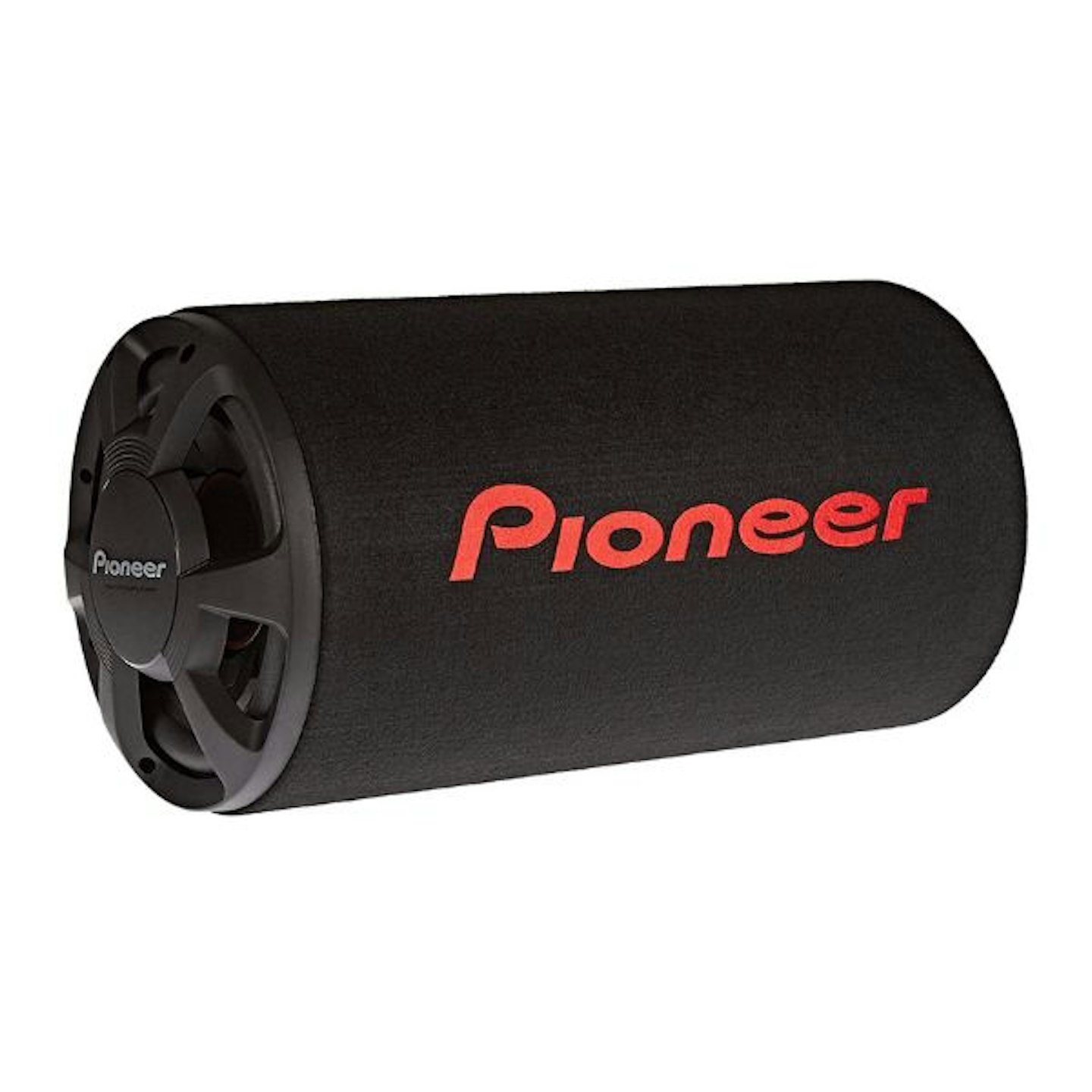
Unlike the rest of the subwoofers on this list, the Pioneer TS-WX306T houses its sub in a tube enclosure. Built using solid MDF for strength and durability, this subwoofer is cable of distributing heat from its centre via an intelligent Voice Coil Cooling System, improving its frequency response and high-power handling. This model features Pioneer’s patented lightweight IMPP composite cone for strength and high performance, used in conjunction with the cylindrical housing design to attenuate deterioration of bass quality.
Pros
- High-quality materials
- Intelligent design
Cons
- Big unit
| Weight | 7.79kg |
| Dimensions | 64 x 33.5 x 33.5cm |
| Power output | 1300 Watts Peak Power |
| Active | No |
| Speaker diameter | 12 inches |
| Frequency response | 20 - 125 Hz |
Tube vs box
So, what are the differences between a tube subwoofer and a box subwoofer? While they’re both designed to carry out the same job, they both have their own strong attributes and their weak ones. Based on sound quality, box subwoofers are generally considered to be better than tube subs as they’re more effective at containing the airways to produce a more precise sound overall. If it’s a tight bass sound that you’re after, the enclosed design of a sub-box will restrict airflow in or out of the unit, ensuring greater clarity of the audio.
Conversely, a subwoofer tube will provide a much more boomy bass tone – not great for picking up on delicate musical nuances but fantastic for carefree Wayne’s World-style headbanging. If you want to turn your car into a rolling party station, a sub-tube would make a great choice.
Beyond the quality of the output, however, box subwoofers are usually more expensive than tube subs while bigger, more cumbersome, and more power-hungry. Historically, most box subs were also sold as passive speakers, meaning they required additional amplification to work. Today, many box subs, including some of the examples on this list, come equipped with built-in amplifiers to save the extra weight. Having said that, they’re still usually less portable than their tube subwoofer counterparts.
